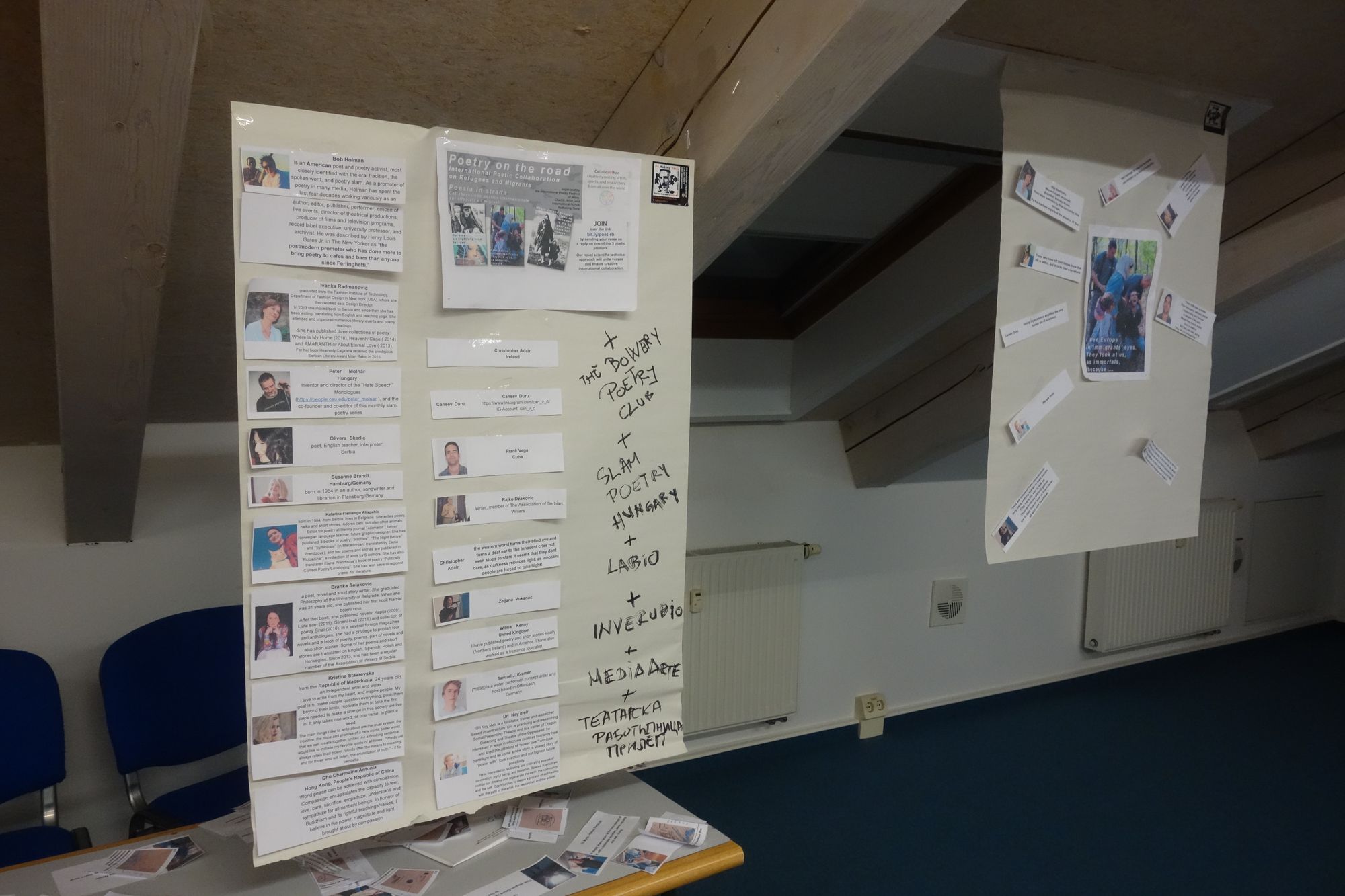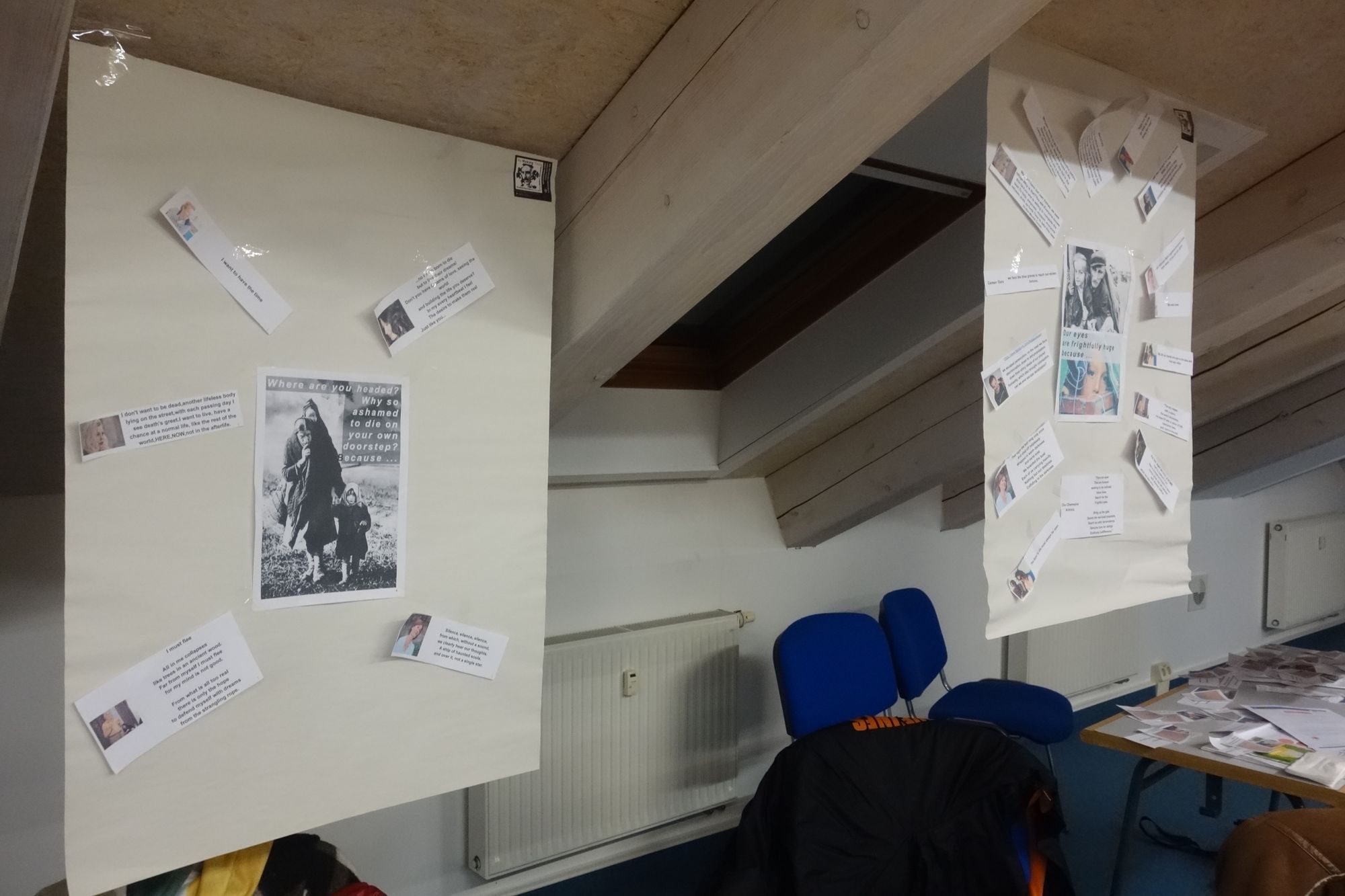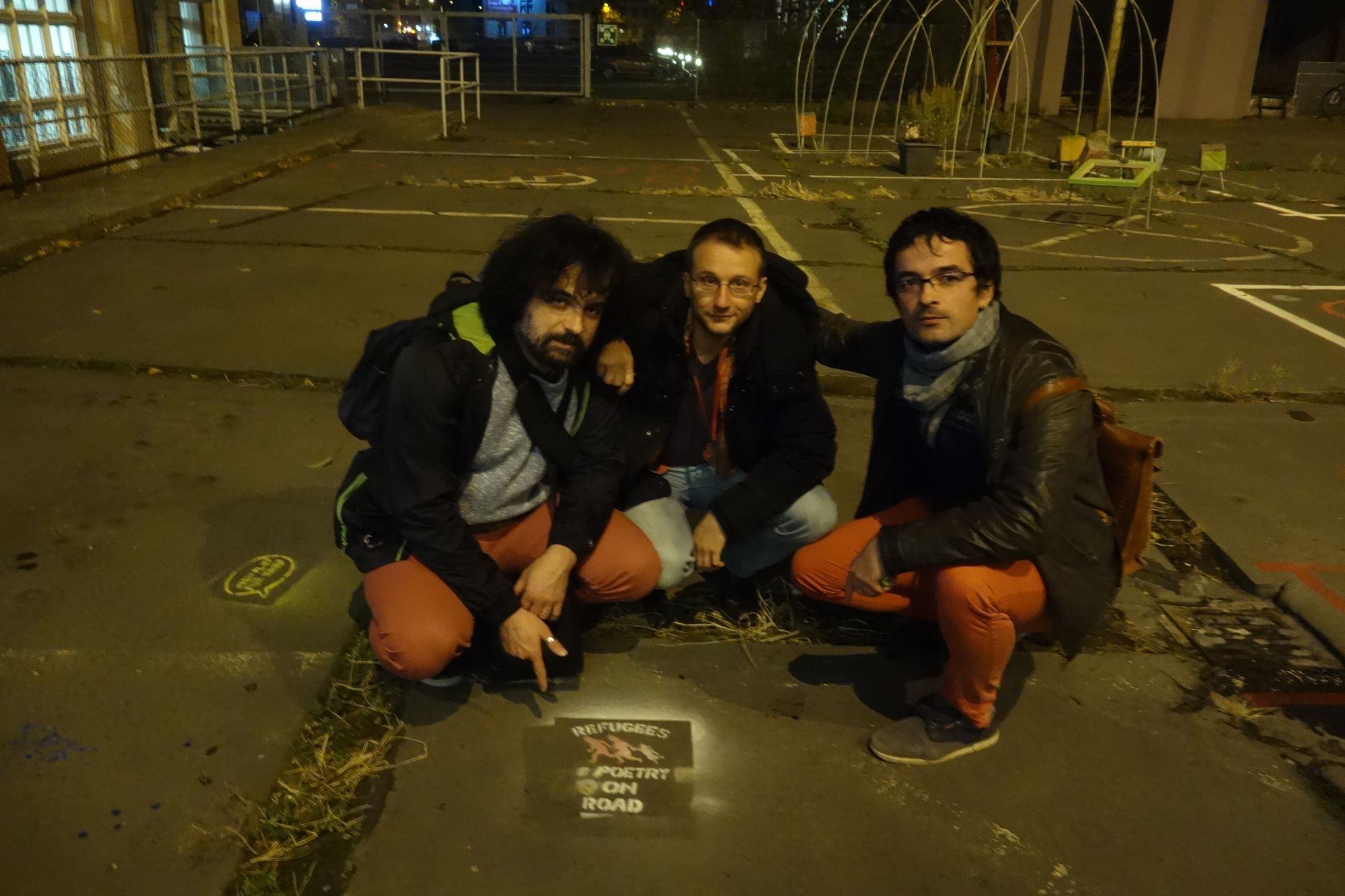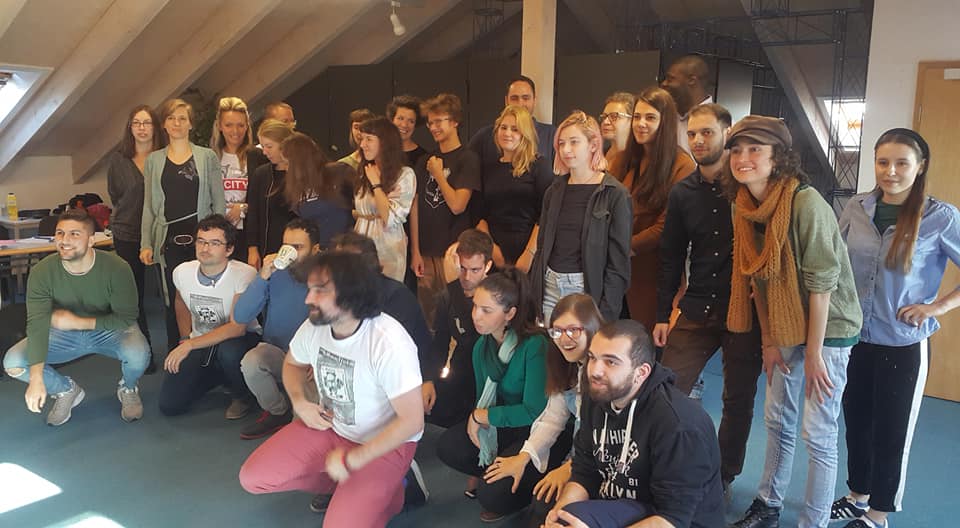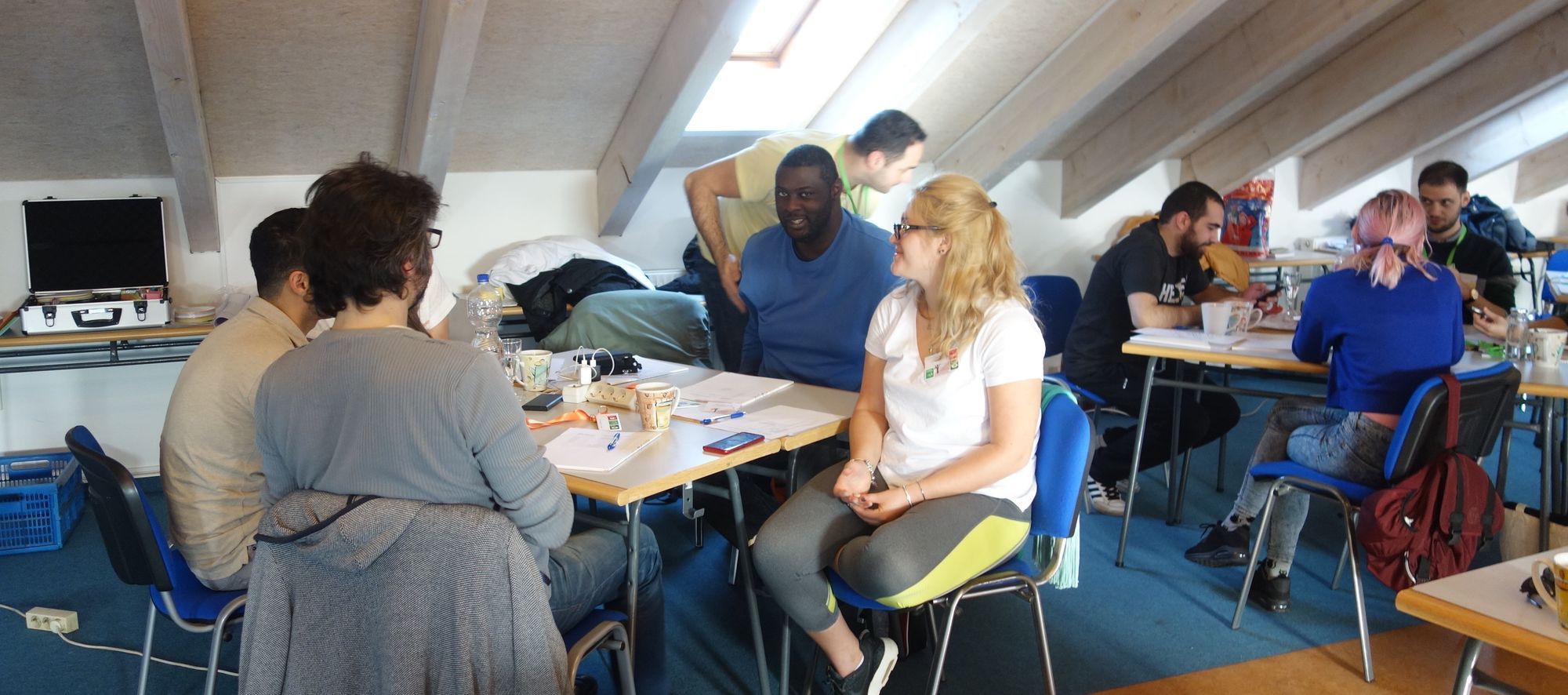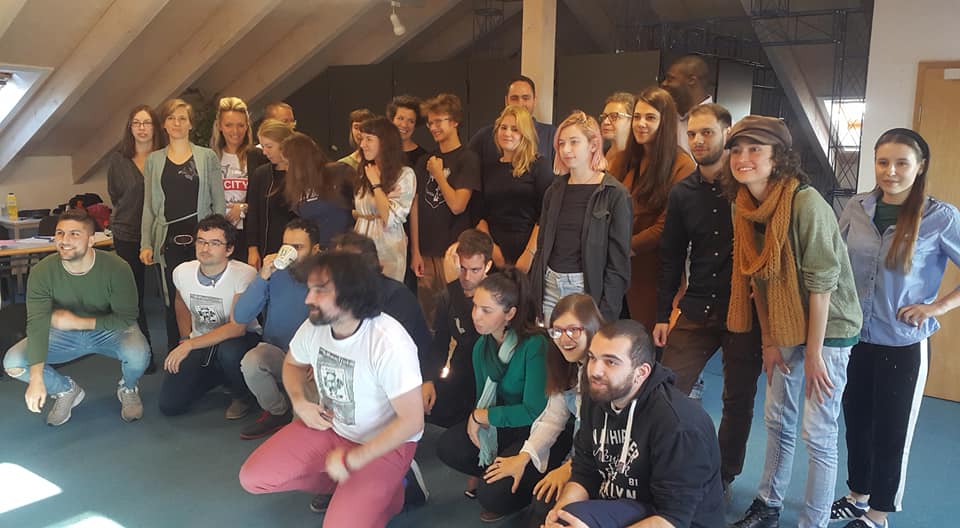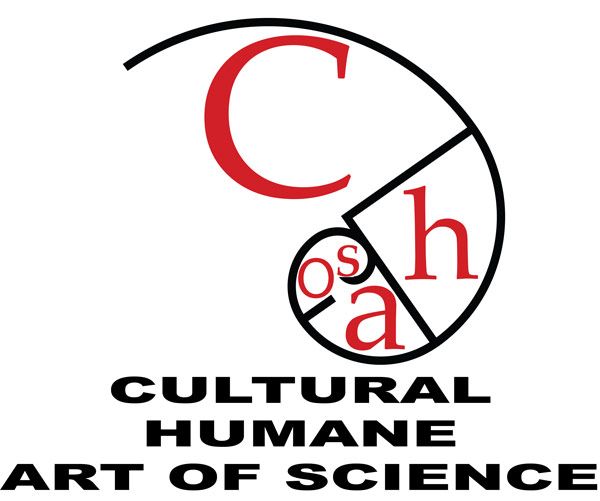Everyday Heroes
Dresden, Germany
ERASMUS+ project
https://www.jkpev.de/en/portfolio_page/everyday-heroes-2018
Civil courage training
ChaOS/ReMaking executed the training as a partner of www.jkpev.de for participants from Albania, the Czech Republic, Cyprus, Denmark, the former Yugoslav Republic of Macedonia, France, Germany, Greece, Hungary, Poland, Serbia, Slovakia, Spain, and the United Kingdom.
We organized the training according to our approach to intrinsic goals-driven civil courage and our approach to sustainable collective activism, socially engaged art, all based on SDGs.
We empowered it with NCA, Performative Dialogue - from Goals to Action, ICT (Boyatzis, 2006), coaching with compassion (Boyatzis et al., 2006), collective performance, and gamification tools.
The workshop elements were designed partially on Vygotsky's “a head taller” approach, but also on Grotowski’s Poor Theatre approaches practiced by ReMaking Tesla co-founders Plavo Theatre.
We focused on the social pillar of sustainable development - and we accompanied the training by the exhibition of Poetry on the Road project - International poetic Collaboration on Refugees and Migrants.
Research Goals. EvoLuation Procedure
A significant outcome of this EvoLuation is that we designed and implemented it through ColaboFlow and Colabo.ReM components. They led the EvoLuation design and enabled IT-augmented guidance of the participants, the overall workshop flow and final evaluation of the flow.
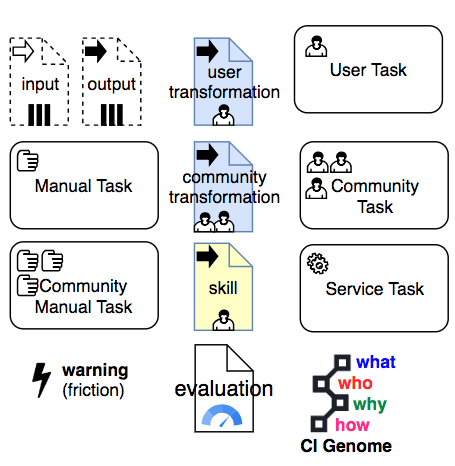
Figure ColaboFlow-extension: Relevant extension of BPMN notation
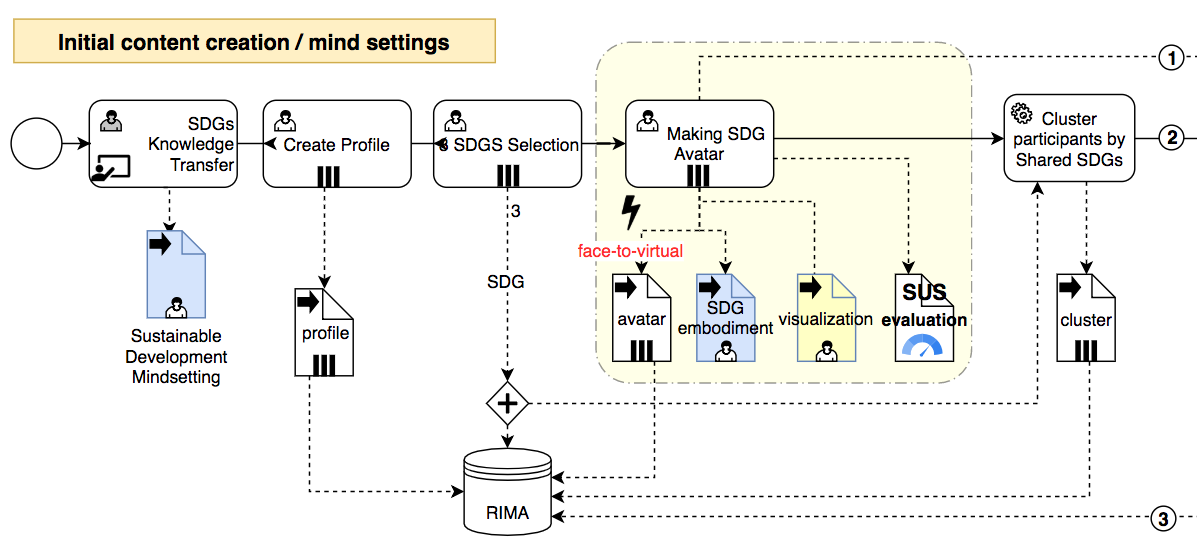
Figure ColaboFlow-a: Workflow (ColaboFlow) of the face-to-virtual SDG inspired workshop (part 1)
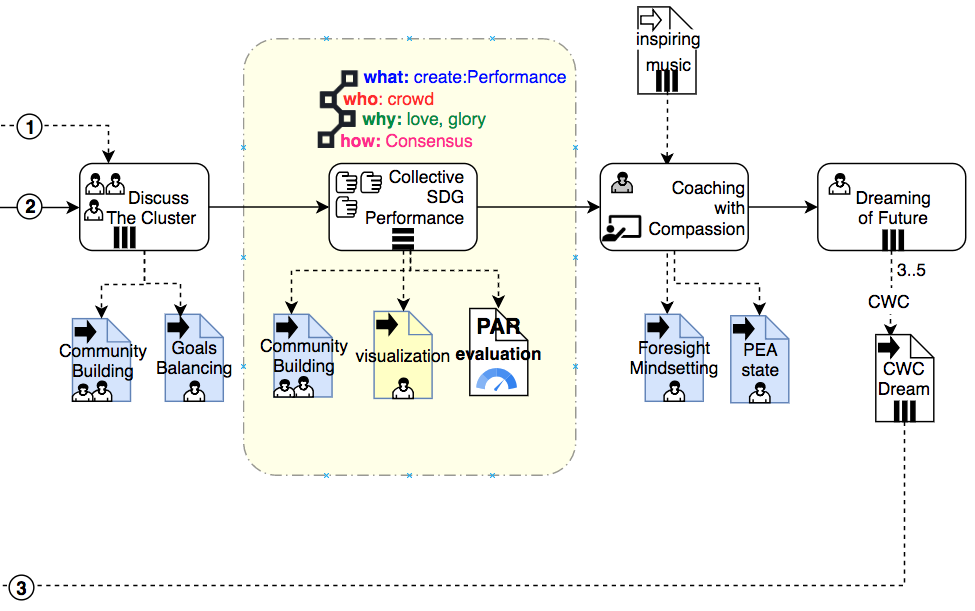
Figure ColaboFlow-b: Workflow (ColaboFlow) of the face-to-virtual SDG inspired workshop (part 2)
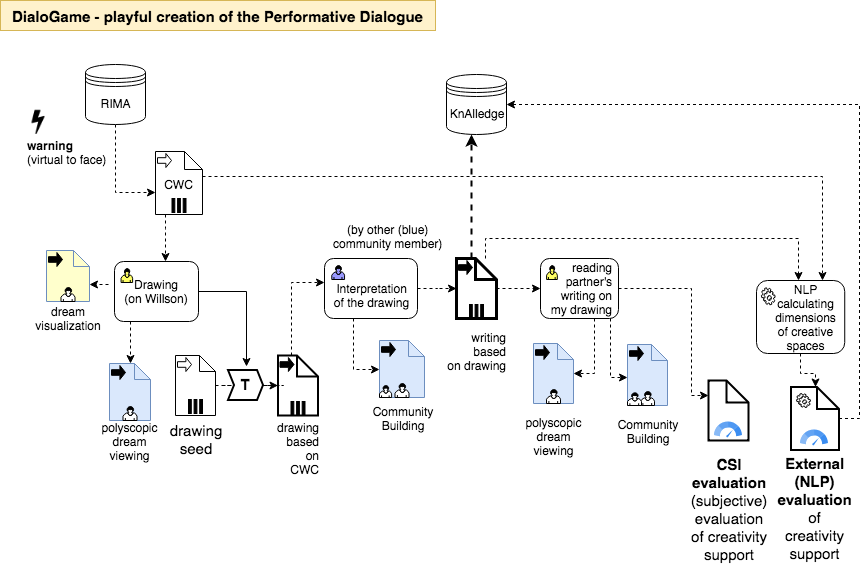
Figure ColaboFlow-c: Workflow (ColaboFlow) of the face-to-virtual SDG inspired workshop (part 3)
The last part of the flow (fig. ColaboFlow-c), is particularly interesting as in a short period, just in a few activities, it practices interplays across opposite boundaries of various "dimensions": individual ↔ collective, literal ↔ visual, virtual ↔ face-to-face, formal ↔ creative, interpretative ↔ metaphorical, internal ↔ externalization, and also addressing ideation, innovation, creative leaps and (self/couples)-feedbacks.
We enabled serendipity effect both through communities of practice, through events, and through time. By applying machine learning on writings of the activists, participants of the Everyday Heroes project (prototype) in the area of civil courage, we connected them with poets writing on the topic of migrations and refugees as part of the project (prototype) Poetry on the Road, an instance of CoLaboArthon.
UN has over the years selected top priorities and problems to be solved on a global and local scale. Those are Sustainable Development Goals (SDG). In our workshop/experiment augmented and partially guided by Colabo.Space, we tried to inspire people to think about those issues, by connecting them to their dreams and visions of the future they would like to live in. We also tried to devise a methodology which would enable them to think more creatively about solutions, as well as collaborate with other peers interested in similar visions. Here is an explanation of the process.
After being familiarized with SDGs, participants would use an online system to select their priority goals.
Here we switched back to the offline world. They were then incentivized to visualize one of the goals by making a sculpture representing it. It required an uncommon effort, and a leap in imagination, to present a UN goal with one’s body posture or movement, yet it was a step toward unlocking participants creativity.
Computer algorithm (implemented as one MindStuff) then created clusters of fixed size for grouping participants with most aligned goals, indicating the most important goal for the group. The algorithm analyzes all possible pairs between participants, and groups those most strongly connected, either by the similarity of dreams or by uniqueness and commonality of SDGs, depending on the workshop phrase.
Participants then gathered together, discussed the goals, things which were familiar to them, but also differences.
After this step, they created a collective visualization for the selected SDG. During this step, it is assumed participants would have to be aware of their colleagues' interests and principles, and in such a way align their posture to fit the group. This step was the second collective action, first being the discussion in the previous step.
Participants were then instructed, by applying our approach to ICT (Intentional Change Theory) and Coaching with Compassion, to dream of the perfect world they would like to live in. After dreaming for a few minutes, they wrote, through Colabo.Space Coaching with Compassion (CWC) MindStuff, 3 to 5 of their visions of the future, in short sentences.
The second part of the workshop involved participants in iterative interaction with other participants through the system. A participant would select one SDG card from her/his choices and would respond to it with one of their dreams. A card could be decorated with an emoticon. The system would suggest three closely related dreams from other participant based on conceptual similarity, and using machine learning algorithms. The participant would select one of those suggestions, and respond to it with one of his dream cards. This process repeats until users have no dreams left that they did not already use in the dialogue.
To get novel and creative prompts for their dreams and therefore introduce creative leaps as a mechanism for supporting ideation, participants were instructed to make a drawing inspired by their dream, starting with creative seeds - unfinished drawings (Williams). Participants exchanged their drawings, without telling the other participant what the dream which inspired the drawing was. They wrote a sentence of their interpretation of the drawing. These new sentences represented the final results of this stage of the workshop. This process was inspired by our usage of creative cards (Dixit Cards). Independently of our research approach, and after we designed it, we found other related research confirming our approach (Kwiatkowska et al., 2014, October).
These results are further enriched through participation of poets from around the world.
Research Findings from Everyday Heroes.Limitations
The type of this workshop was a qualitative experiment. Unfortunately, we did not have enough participants to draw statistically more significant conclusions. However, we do recognize trends and provide some quantitative measures of the effect the drawings had on participants’ interpretation.
Using Natural Language Processing (NLP) toolbox, we were able to map their dream sentences into vectorized space which is very robust in detecting similar words, concepts, and synonyms. By using Word Mover’s Distance algorithm, we were able to detect a significant change in the interpretation of topical space compared to the original dreams that motivated the drawing’s authors. For N = 22 participant interactions, we detect following statistics (fig. everyday-heroes-wilson-results), using slight variations of the content normalization: "diffs" (all words are used), "diffs without stopwords"[1], "diffs [of] key phrases" only (detected with Microsoft NLP API).

Figure everyday-heroes-wilson-results: Everyday Heroes - research results - NLP Evaluation of the impact of creativity leap through the Wilson Test of unfinished drawings
WMD algorithm between two sentences showing significant divergence in topics results in distance scores above 0.7, where the score of 0 would mean two conceptually identical sentences, and scores [0-0.3] meaning very similar.
For the qualitative judgment of creativity of results, we would need independent annotators.
Notwithstanding, the workshop contains a plethora of details which inspire for various directions of further research from changing details in instructions, to setting up variations sequence of steps during the workshop. With a larger number of participants or a few distinct workshops, it would be possible to measure the effects of various interventions accurately during the workshop. Does brainstorming before the dreaming increase or decrease creativity. Does individual and/or collective sculpture creates a more emotional attachment to the SDGs, and therefore more personalized or emotional responses. Emotions in responses can be measured quite well with machine learning algorithms. Using DialoGame, we could include a more structured dialogue as well, with mapped and laid out arguments and solutions for SDG problems. Does creativity space of responders’ description after drawing widens in comparison to original dreams. Would it widen even more or maybe less if it was introduced sooner into the sequence?
The significance of this EvoLuation (workshop) is its augmentation of real-life human interaction with computer generated prompts, and also with people who are not present at the workshop. It is easy to envision how the clustering and dream matching components can enable scalability for problem-solving, where people from all around the world can work in small groups, but collectively create and combine results with amplified creativity.
Stop word https://en.wikipedia.org/wiki/Stop_words ↩︎
